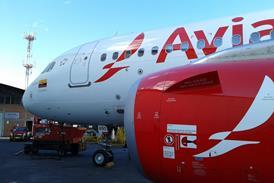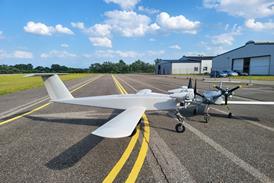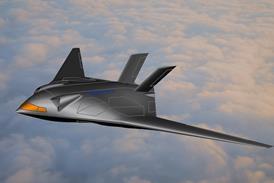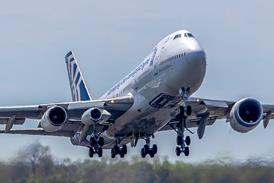With an emphasis on European Space cooperation at Le Bourget, Rob Coppinger looks at the reality of the latest Euro-space plans.
Fifty years after the launch of the first satellite, the Soviet Union’s Sputnik, Europe has agreed its first space policy. But against US plans for a return to the Moon, the rise of China’s manned programme and India’s ambition, Europe’s strategy seems down to earth.

China launched its first astronaut in October 2003, the USA is planning manned Moon missions by 2020 and India aims to develop a human-rated launcher and capsule. All three are single nations with space policy goals partly inspired by national pride and a desire to maintain or attain superpower status.
Europe’s space programme, in contrast, has been formed through alliances of 31 countries, combining the overlapping memberships of the European Union, European Space Agency and EUMETSAT, the European Organisation for the Exploitation of Meteorological Satellites, and requiring a complex mix of demands and issues to be agreed.
Space Councils
Working through these issues required four “space councils”, joint high-level meetings of the EU’s competitiveness council and ESA’s ministerial council, beginning in November 2004. The fourth meeting on 22 May approved the policy proposed by the European Commission and the ESA director-general. Unlike India, where China’s success has spurred public calls for a national manned effort, and the USA, where NASA uses polls showing high levels of support for its exploration programme, Europe’s technocratic policy development has not been informed by public opinion. Instead individual EU governments have historically sold their space budgets on the basis of policies more relevant to their citizens’ daily lives. This is reflected in the new European Space Policy and its €6 billion ($8 billion) a year civil plan to use space-based navigation, communication, observation and science to support, for example, EU policies in agriculture, climate monitoring and transport. Despite this supporting role, Europe’s spending on space dwarfs that of Japan (about €2.2 billion), Russia (€820 million) and India (€815 million), while space industry consulting company Euroconsult estimates China’s civil space spending to be €134 million a year excluding its manned programme, which is operated by the military with an unknown budget.
But compared with the US space budget, Europe’s spending looks small. NASA has around $16 billion a year for civil space, with another $21 billion spent by the Department of Defense.
The difference in spending is even more marked when Europe’s greater total wealth is factored in. “When you look at the gross domestic product of the EU nations it makes it larger than the USA, but because of issues of funding methods and priorities [the outcome is very different],” says Henry Hertzfeld, space policy and international affairs research professor at George Washington University’s Elliot school of international affairs.
Despite its potential combined wealth, the new EU space policy envisages no great leaps. “I was expecting more vision. This document does not put into perspective what is going on in the rest of the world,” says European Space Policy Institute secretary- general Serge Plattard.
In China and India the expansion of space programmes is being funded by economies growing at a rate of 8% or more a year, while in Russia industry is benefiting from an economy buoyed by oil revenue. Europe’s space sector, with its €4.4 billion annual turnover and direct employment of 28,000 people, sees this as unwelcome competition. At least a third of its revenue is from a commercial market increasingly accessible to these low-cost countries.
“Industry relies on non-European markets and that is fragile. In Europe we don’t have the guaranteed markets like the USA,” says Plattard. To the Aerospace and Defence Industries Association of Europe (ASD) trade body, one solution is a shift in space spending from ESA’s research and development focus. ESA is responsible for half of Europe’s civil space spending, with national programmes and spacerelated research projects under the EU’s Framework Programme making up the rest.
ASD-Europe’s space specialist Olivier Lemaitre thinks this R&D focus has to change with the development of more space-based services. “The EU should have a budget line for space that is not R&D, as it does for Galileo under Transport,” he says.
Right balance
“They are trying to find the right balance,” he says. This balance has seen the member states create national technology capabilities that ESA combines and develops into deployable systems with the EU as the customer. That this is an ongoing balancing act can be seen in the highs and lows of the two EU/ESA flagship projects, the Galileo satellite navigation system and Global Monitoring for Environment and Security (GMES).
While EUMETSAT and other past European programmes used the model of institutional development and deployment, followed by privatisation for commercial exploitation, Galileo was to heavily involve private funds from the beginning. Under its planned public-private partnership model, private capital was to cover two-thirds of the cost. But the consortium of companies within the newly created Galileo Operating Company will now not agree to the plan.
This means European governments are planning a different approach for GMES, more akin to the older institutional style. ESA director of Earth observation programmes Volker Liebig stresses the importance of the GMES management structure: “We have to find the right governance.” The first GMES data services are to be switched on next year, for European governments only while physical networks,ground stations, management and cost structures are put in place.
Financial question marks over flagship projects are unwelcome for the European space industry. Its leaders, such as EADS Space chief executive Francois Auque, have long complained about the lack of work and the threat from China. Plattard agrees: “GMES puts on a certain workload, but for industry it is insufficient.”
Lemaitre, Hertzfeld and Plattard agree that security and defence has the strongest prospect of becoming a dominant budgetary driver of a future European space policy. For Lemaitre “it is no longer taboo” to have space linked with security and defence, and Plattard says “Galileo and GMES should be used by both civilian and military”.
Senior EC officials say off the record that making Galileo primarily civilian was a mistake. They not only want Galileo to be seen as a dual-use system, they want EU states to pay for its military use to bolster the economics of the navigation project.
While industry might be perceived as an enthusiastic supporter of big international collaborative projects, ASD-Europe finds the reality is a more sanguine approach. Major companies fear the wider diplomatic process could push work abroad in favour of trade gains in non-space related areas. But for all its perceived weaknesses, the new European space policy has been welcomed because, as Lemaitre points out: “It means Europe is finally recognising the strategic importance of space and how it can provide tools for European policy.”
Source: Flight Daily News













